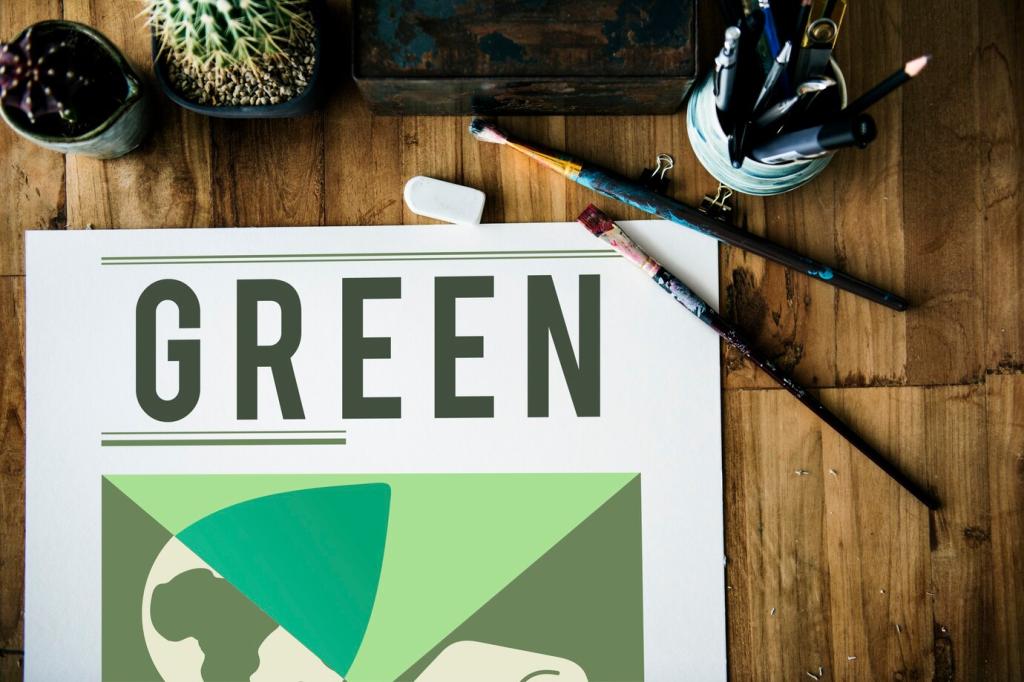Crafting with Recycled Materials
Discover the creative and sustainable world of crafting with recycled materials. This approach not only reduces waste but also turns discarded items into beautiful, functional, or whimsical creations. Whether you’re new to crafting or a seasoned artisan, working with recycled materials encourages resourcefulness, sparks inspiration, and helps protect the environment. Embrace the possibilities of repurposed art and design by exploring a rich array of techniques, ideas, and eco-friendly practices.

The Joy of Upcycling
Personalized crafts start with familiar materials—think jars, cans, or worn-out clothes. By adding your creative touch using paint, fabric, or embellishments, these items are reborn with new purpose and character. For instance, a glass jar might become a charming lantern with a bit of twine and colored paper, while an old sweater could be refashioned into a cozy cushion cover. The possibilities are as varied as your imagination. Personalizing recycled objects fosters a sense of ownership and pride in both the process and the result. Each finished project tells a story, making every upcycled item a conversation starter and a reflection of your individual taste.
Crafting with Paper and Cardboard
Paper and cardboard are among the most versatile recycled crafting materials. From sturdy boxes to delicate quilled art, the possibilities are vast. Crafters often start by flattening and sorting materials, then cutting, folding, or layering them as needed. Cardboard can be painted, covered with fabric, or combined for structural projects like shelves or organizers. Magazine pages can be rolled or woven into baskets or beads. Ensuring the strength of final products often involves reinforcing joints and sealing surfaces with non-toxic glue or varnish. Paper crafting encourages experimentation, as even scraps can be pieced together for mosaics or collages.
Turning Plastics into Art
Plastic bottles, containers, and packaging are abundant and highly adaptable. Artists and crafters repurpose these items into planters, sculptures, jewelry, or even furniture. The process often begins with washing and cutting the plastic into desired shapes. Techniques such as melting, weaving, or painting stretched plastic surfaces allow for endless creative expression. Safety is a must, especially with heat-based methods. Finished works benefit from sanding sharp edges and sealing paints to ensure longevity. Turning plastics into art not only diverts waste from landfills but also raises awareness about the global plastic problem in a visually compelling way.
Inspiring Kids Through Eco-Crafting
Learning While Creating
Craft projects with recycled materials provide a platform for interactive learning. As kids build models, puppets, or wearable art from boxes, lids, and fabric scraps, they develop hand-eye coordination, planning skills, and confidence in their ability to invent and innovate. These activities also introduce basic scientific concepts such as balance, structure, and material properties. Throughout the process, children learn to see ‘waste’ in a new light, understanding that every item has the potential for transformation. Crafting in this way makes recycling tangible and relatable, anchoring important environmental lessons in memorable, creative experiences.
Collaborative Family Projects
Eco-crafting is a wonderful opportunity for family bonding. Gathering household recyclables and working together on group projects like recycled robots, holiday ornaments, or bird feeders creates shared memories and teamwork. Older family members can pass on skills, while younger ones contribute fresh ideas. The collective effort required to sort, plan, and execute projects teaches important values of cooperation and sustainability. As families witness the joy and pride in completing something beautiful together, they often find themselves inspired to tackle other sustainability challenges as a unit, making eco-friendly lifestyles a natural part of home life.
Encouraging Imagination and Play
Crafts made from recycled materials naturally lend themselves to imaginative play. Kids can create costumes, make-believe sets, and custom toys entirely from reshaped cardboard, fabric, and more. This open-ended creativity sparks storytelling, role-playing, and problem-solving skills, all while reinforcing the idea that fun does not depend on new purchases. When children invent their own playthings from discarded materials, they take ownership of both their creations and the stories they tell, reinforcing self-sufficiency and innovative thinking. Nurturing this imagination lays the foundation for a lifetime of resourceful, environmentally conscious habits.
